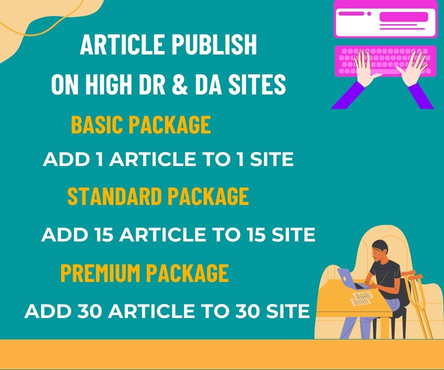The construction industry, one of the oldest sectors in human history, has undergone a remarkable transformation in recent years, driven by advances in technology. From the days of rudimentary tools and manual labour to the integration of sophisticated machinery and digital solutions, technology has revolutionised how structures are designed, built, and maintained. This evolution is not just improving efficiency but also redefining the very essence of construction. Meet Construction Company Swindon
Smarter Design Through Digital Tools
Modern construction begins with intelligent design. Building Information Modelling (BIM) has become a cornerstone of the industry, enabling architects, engineers, and contractors to collaborate seamlessly. BIM allows for the creation of detailed 3D models that simulate real-world conditions, helping to identify potential challenges before construction begins. This foresight reduces errors, saves time, and ensures that projects remain on budget.
In addition to BIM, augmented reality (AR) and virtual reality (VR) are enhancing design processes. These technologies provide immersive experiences, allowing stakeholders to visualise projects in a realistic environment. By enabling clients to “walk through” their future spaces, AR and VR ensure that designs meet expectations and requirements before construction commences.
Faster Construction with Advanced Machinery
The adoption of advanced machinery and robotics is accelerating construction timelines. Autonomous vehicles and drones are now commonplace on construction sites, performing tasks such as surveying, site inspection, and material transportation with unprecedented speed and accuracy. Robots are also being used for repetitive tasks like bricklaying, reducing the reliance on manual labour and minimising human error.
Prefabrication and modular construction methods further enhance efficiency. These approaches involve manufacturing building components off-site in controlled environments before assembling them on location. By streamlining the construction process, these methods significantly reduce project durations and minimise disruption to surrounding areas.
Stronger Structures with Innovative Materials
The quest for sustainability and resilience has led to the development of innovative construction materials. Self-healing concrete, for example, uses bacteria or chemical agents to repair cracks automatically, extending the lifespan of structures and reducing maintenance costs. Similarly, carbon-fibre-reinforced polymers and other lightweight, high-strength materials are improving the durability and performance of buildings.
Green building materials, such as cross-laminated timber and recycled plastics, are also gaining traction. These sustainable options not only reduce environmental impact but also contribute to energy efficiency, making structures more cost-effective over time.
Transforming Site Management with Data and Connectivity
Data-driven decision-making is transforming site management. The Internet of Things (IoT) enables the integration of sensors and smart devices across construction sites, providing real-time insights into equipment performance, worker safety, and project progress. Paired with artificial intelligence (AI), these systems can predict potential issues, optimise resource allocation, and improve overall project outcomes.
Cloud-based project management platforms are another game-changer. They facilitate communication and coordination among teams, regardless of their physical location. This connectivity ensures that everyone is aligned, reducing delays and enhancing productivity.
Challenges and the Road Ahead
While technology offers immense benefits, its adoption in construction is not without challenges. High initial costs, resistance to change, and the need for specialised training can hinder implementation. However, as the industry embraces digital transformation, these barriers are gradually being overcome.
Looking forward, the integration of artificial intelligence, machine learning, and sustainable practices promises to drive further innovation. By continuing to build smarter, faster, and stronger, the construction industry is not only shaping the physical world but also paving the way for a more efficient and sustainable future.
Client Feedback
Grammar and Spelling:
- Ensure consistent capitalisation for terms like “Building Information Modelling (BIM)” and “Internet of Things (IoT).”
Structure Improvements:
- Strengthen the introduction by summarising key technological advancements, such as BIM, AR/VR, advanced machinery, and innovative materials.
- Use clearer, SEO-friendly subheadings, such as:
- “Smarter Design with Digital Innovations”
- “Accelerating Construction with Advanced Machinery”
- “Strengthening Structures Through Innovation”
- “Data-Driven Site Management in Swindon Construction”
- Reiterate Swindon’s role in embracing these advancements in the conclusion to align with the keyword.
Style and Tone:
- Maintain a professional and forward-looking tone while varying sentence lengths for better readability.
- Integrate the keyword “construction companies in Swindon” naturally throughout the article, e.g., “Construction companies in Swindon are leveraging cutting-edge technologies to redefine the industry.”
- Add smoother transitions between sections to ensure cohesive flow.
SEO Recommendations:
- Incorporate the keyword into headings and key sentences, e.g., “How Construction Companies in Swindon Are Building Smarter.”
- Add a meta description, e.g.: “Discover how construction companies in Swindon are revolutionising the industry with advanced technologies, innovative materials, and smarter management.”
- Highlight examples or advancements specific to Swindon to enhance local relevance and SEO optimisation.
Length:
- The article is approximately 1,000–1,200 words. Good

